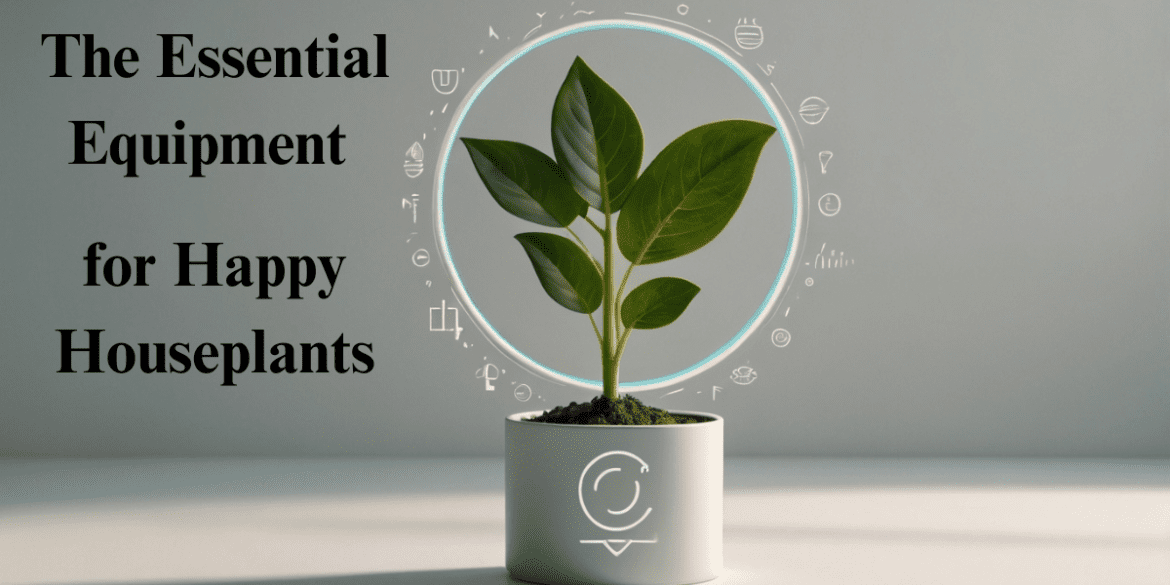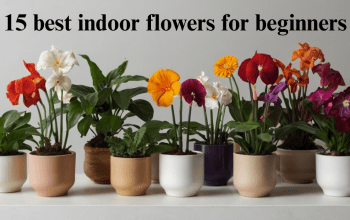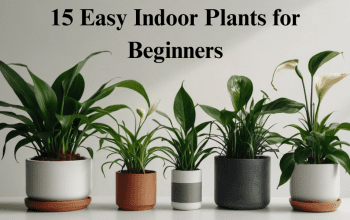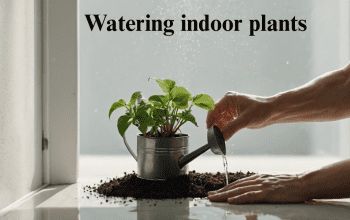Be honest—have you ever bought a plant, placed it lovingly in your living room, whispered “grow, baby, grow”… and then watched it slowly shrivel like it had signed a contract to haunt you with guilt?
Don’t worry—you’re not cursed, you just didn’t give your green buddy the right tools to thrive. Plants are like us: you can’t just drop a human in the middle of a desert with no sunscreen, water bottle, or snacks and expect them to look happy. Same goes for your leafy friends—they need their essentials.
That’s where this guide comes in. We’re about to break down The Essential Equipment for Happy Houseplants—the gear that makes the difference between a sad, limp fern and a lush, thriving indoor jungle you’ll want to show off on Instagram.
Think of it as building your plant’s survival kit (minus the drama). From pots that actually breathe, to the right soil mixes, to gadgets that make plant care foolproof—even if you travel a lot or occasionally forget they exist—we’re covering it all.
Whether you’re a proud plant parent with names for each of your succulents, or someone who’s killed three cacti already (seriously, how do you even kill a cactus?), this article will give you everything you need to finally get it right. Let’s turn that brown thumb into a green one—one piece of equipment at a time. 🌱
Pots & Planters: The Real Estate Market for Plants
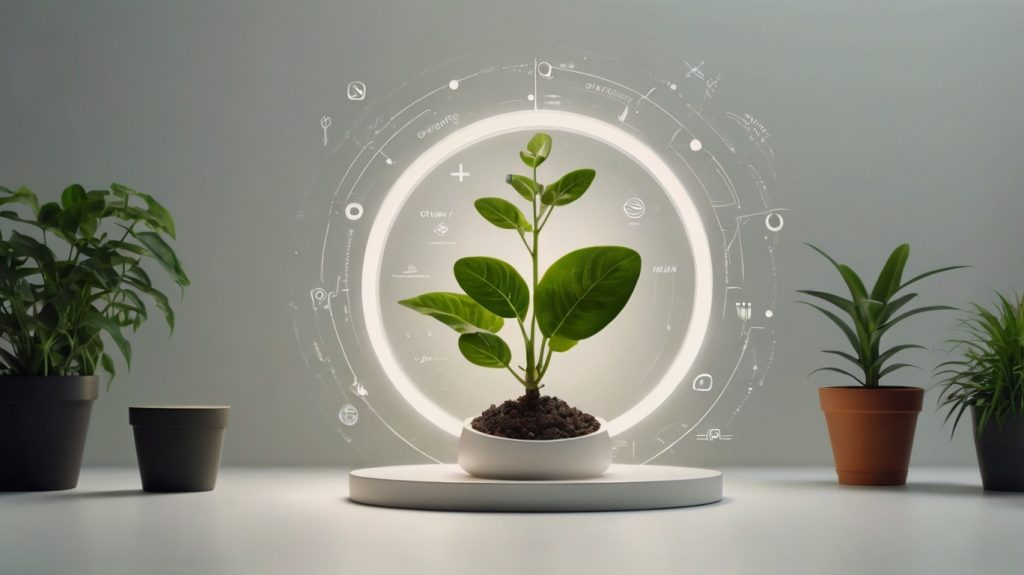
Your houseplants don’t care about your Pinterest aesthetics as much as they care about one thing: drainage holes. That’s right, plants hate soggy feet. Imagine wearing wet socks 24/7—that’s root rot, and trust me, nobody wants that.
Here’s the scoop:
Terracotta pots – These are like breathable yoga pants for roots. They wick away moisture, prevent overwatering, and add a rustic vibe. Downside? They dry out quickly, so you’ll be on water duty more often.
Ceramic pots – Gorgeous, glossy, and heavy. They’re great for stability (your tall fiddle leaf won’t tip over), but make sure they’ve got a drainage hole—otherwise you’re basically creating a swamp.
Plastic pots – Lightweight, cheap, and hold moisture well. Not as breathable as terracotta, but great if you forget to water sometimes.
Self-watering planters – The lazy gardener’s dream. They have built-in reservoirs so your plant can sip water as needed. It’s like giving your plant its own hydration system.
Pro tip: Always use a saucer under your pots unless you enjoy the thrill of mystery water stains on your wooden floor.
Soil & Growing Mediums: The Secret Sauce
Soil is to plants what Wi-Fi is to us—if it’s bad, nothing works. And spoiler: not all soil is created equal.
Potting mix vs. garden soil: Never, ever use garden soil indoors. It compacts, suffocates roots, and invites bugs. Indoor plants want a fluffy, well-draining potting mix, thank you very much.
Perlite & vermiculite: These little white or shiny flecks aren’t packing peanuts—they’re aeration heroes. They keep soil light and airy so your plant roots can breathe instead of gasping for air.
Coco coir: A sustainable alternative to peat moss. It holds water well but still drains properly. Bonus: your eco-conscious side gets bragging rights.
Special mixes: Cacti and succulents want sandy, fast-draining soil. Orchids prefer chunky bark mixes. Basically, if you want happy plants, don’t treat a fern like a cactus—they’re not roommates in this sitcom.
Think of soil as your plant’s mattress. Too hard, and they’re miserable. Too soft, and they sink. Get it just right, and they’ll stretch out their roots like they’re on vacation.
Watering Equipment: Because Cups Don’t Cut It
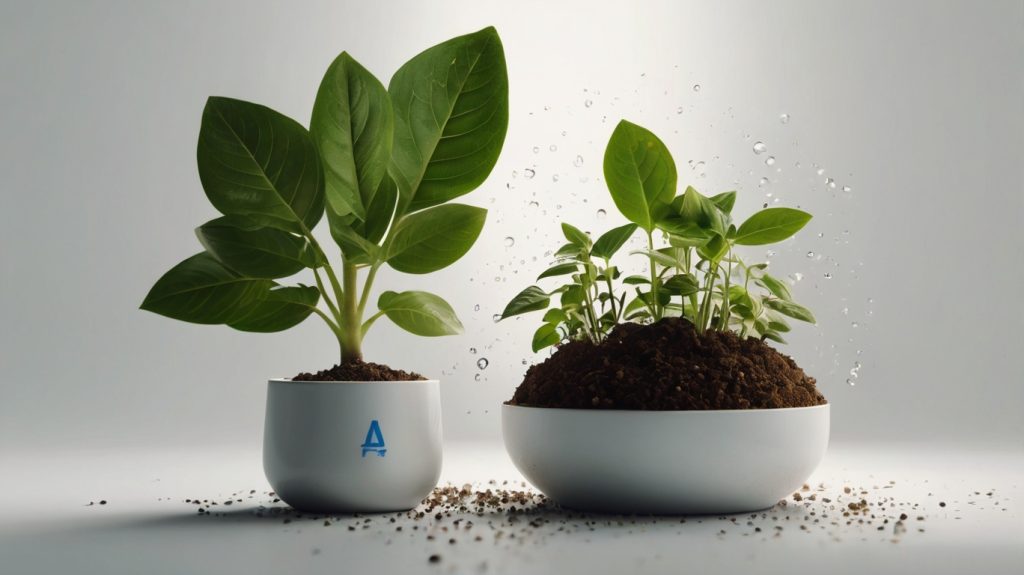
Sure, you could water your plants with that old coffee mug, but if you want to level up, let’s talk about real tools.
Watering cans – Look for a narrow spout for precision watering. Nothing’s worse than dumping a mini flood on your plant’s head. Bonus if it’s cute—watering feels less like a chore.
Misters – Some plants (hello, tropical divas like calatheas and ferns) enjoy a gentle misting to boost humidity. Just don’t overdo it—you’re aiming for “spa day,” not “monsoon season.”
Self-watering spikes & globes – Great for travelers or forgetful waterers. Fill them up, stick them in, and let physics do the work.
Moisture meters – The plant parent lie detector test. Stick it in the soil, and it tells you if it’s time to water or if you should step away from the can. No more guessing, no more “but I thought it was thirsty!” plant funerals.
Remember, most plant deaths aren’t from drought—they’re from over-love (aka overwatering). So sometimes the best watering tool is restraint.
Lighting Solutions: Because Plants Can’t Live on Vibes Alone
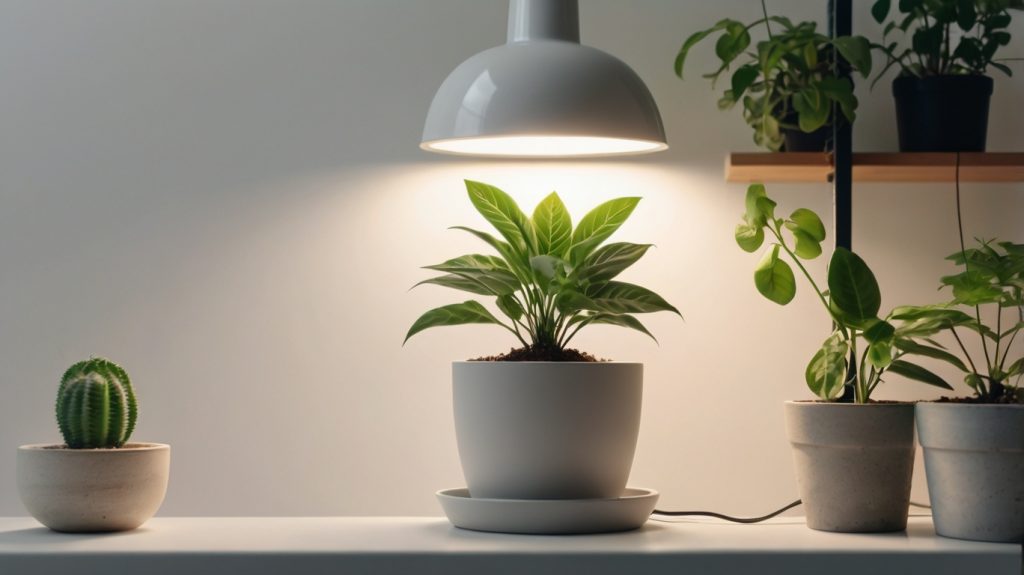
Here’s the deal: plants don’t just want light—they need it. Light is their food, energy, and mood booster rolled into one. Without it, they basically sit there sulking until the leaves drop off like a bad breakup.
Natural light: If you’re blessed with big, bright windows, congratulations! You’ve basically got a plant penthouse. South-facing windows are sun central (great for cacti and succulents), east-facing windows offer gentle morning rays (perfect for herbs and tropicals), and north-facing windows… well, let’s just say that’s the plant equivalent of moving into a dark basement.
Artificial light: Don’t panic if your place feels more “cozy cave” than “sunroom.” Grow lights are your secret weapon.
LED grow lights – Energy efficient, customizable spectrum, and your plants will glow like runway models.
Fluorescent lights – Affordable and effective, especially T5 tubes.
Full spectrum lights – Mimic natural sunlight so well that even your fiddle leaf fig will start posting selfies.
Pro tip: Rotate your plants occasionally. Otherwise, they’ll lean toward the light so hard you’ll think they’re practicing yoga poses.
Fertilizers & Plant Food: Because Soil Isn’t an Endless Buffet
Here’s the myth: “Oh, I repotted my plant, so it’s good forever.” Nope. Soil nutrients run out faster than snacks at a party. Fertilizers are how you refill the pantry.
Liquid fertilizers – Easy to mix with water, quick results, and you can adjust doses depending on the season.
Slow-release pellets – The crockpot version of plant food. Sprinkle them in, and they slowly feed your plant over months. Perfect for the forgetful.
Organic options – Compost teas, worm castings, fish emulsion. Yes, some of them smell like swamp juice, but your plants will thank you with lush, vibrant growth.
Rule of thumb: Feed during growing season (spring & summer) when your plant is active, and take it easy during fall and winter. Overfeeding is like giving your kid five cans of Red Bull—it won’t end well.
Think of fertilizer as vitamins. Too little, and your plant looks tired. Too much, and you’ll burn the roots. Aim for Goldilocks—just right.
Humidity Helpers: Spa Day for Plants
Now, let’s talk humidity—the secret sauce for tropical plants. Imagine moving from a rainforest to a desert; that’s what most houseplants feel indoors.
Pebble trays – The classic trick. Fill a tray with water and pebbles, place your plant on top, and voilà—localized humidity without drowning roots.
Humidifiers – The VIP solution. Small portable ones can turn your living room into Bali in minutes. Your plants (and probably your skin) will thank you.
Grouping plants together – Plants release moisture through transpiration, so when they hang out in groups, they create their own little rainforest club. Bonus: it looks amazing.
DIY hacks – A bowl of water near a radiator, or hanging damp laundry nearby (multi-tasking at its finest).
Humidity is especially important for fussy beauties like calatheas, ferns, and orchids. Without it, their leaves get crispy faster than burnt toast.
Pruning & Grooming Tools: Your Plant’s Personal Stylist ✂️
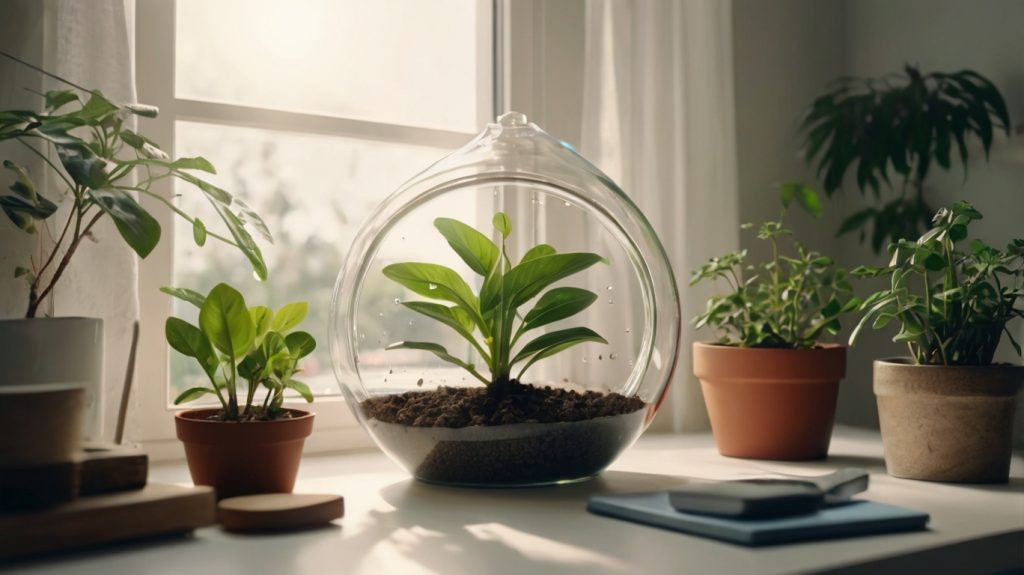
Plants are like people—they look better with a little trim now and then. Enter pruning tools, the plant world’s equivalent of scissors, combs, and a good blowout.
Pruning shears – Sharp, precise, and perfect for snipping off dead leaves, leggy stems, or flowers past their prime. Don’t use your kitchen scissors (please)—your plant deserves better.
Scissors for delicate plants – Bonsai or small herbs benefit from tiny, sharp scissors that won’t crush their stems. Think of them as the manicure set of the plant world.
Leaf shine wipes or sprays – Dust isn’t just annoying—it blocks sunlight from reaching your plant’s leaves. Wipe them down, and suddenly your plant looks like it’s ready for a red-carpet photoshoot.
Pruning isn’t about being mean—it’s about encouraging new growth. When you cut off the weak, straggly parts, your plant can put its energy into fresh, healthy leaves. It’s like sending your plant to the spa: trim, glow, thrive.
Support Structures: Because Some Plants Need a Wingman 🌿
Some houseplants are independent divas. Others are floppy little souls that need a bit of backup. That’s where support structures come in.
Moss poles – Perfect for climbing plants like monstera or philodendron. They mimic the trees these plants would climb in the wild. Bonus: they also add humidity when damp.
Trellises – Great for vines that like to spread out and show off. You can find them in wood, metal, or even artsy geometric shapes to double as decor.
Plant stakes – Simple sticks that help support tall, top-heavy plants like amaryllis. Think of them as training wheels for plants.
Hanging systems – If floor space is tight, hanging baskets or macramé holders let trailing plants like pothos or ivy show off their dramatic cascading vibes.
Pro tip: Always tie your plants gently with soft ties or Velcro straps. No one likes to be choked—not even your monstera.
Pest Control Gear: The Battle of the Bugs 🐛🚫
Here’s the truth: if you own houseplants long enough, you’ll meet their uninvited friends—spider mites, fungus gnats, mealybugs. Gross? Yes. Defeatable? Absolutely.
Neem oil – The superhero of natural pest control. Mix it with water and spray—it’s safe, effective, and smells kind of like earthy peanut butter.
Insecticidal soap – Gentle enough not to hurt plants, tough enough to take down soft-bodied pests. A must-have in every plant parent’s arsenal.
Sticky traps – Great for fungus gnats. These yellow cards lure them in and catch them like flypaper. Not glamorous, but oh-so-satisfying.
Alcohol swabs/Q-tips – Mealybugs look like bits of cotton, but don’t be fooled. Dab them with alcohol, and you’ll zap them instantly.
Spray bottles – Sometimes all you need is a strong blast of water to knock off pests. Cheap, simple, and surprisingly effective.
The trick is early detection. Check under leaves, around stems, and in soil. If you spot pests early, you can handle them before they multiply like it’s spring break.
Temperature & Environment Tools: The Plant Climate Police 🌡️
Here’s the thing: your plants don’t care about your cozy blanket or AC bill. They care about staying in their Goldilocks zone—not too hot, not too cold, just right.
Thermometers – Simple, cheap, and lifesaving. Keep one near your more delicate plants so you’ll know if your sunny windowsill turns into a toaster oven mid-day.
Hygrometers – Fancy name, simple job: it tells you humidity levels. Perfect if you have ferns, calatheas, or orchids that act like divas when the air gets too dry.
Draft stoppers – Plants hate sudden temperature changes. That sneaky winter draft near the window? It’s like your plant got hit with an unexpected ice bucket challenge. Draft stoppers help.
Portable heaters or fans – To keep air moving and temps steady. Plants don’t like stuffy rooms—think of it as giving them a gentle breeze like they’d get outdoors.
Bottom line: if your plants could talk, they’d beg for a stable environment. (They’d also probably ask why you haven’t watered them yet.)
Storage & Organization: Because Chaos Isn’t Cute 🪴📦
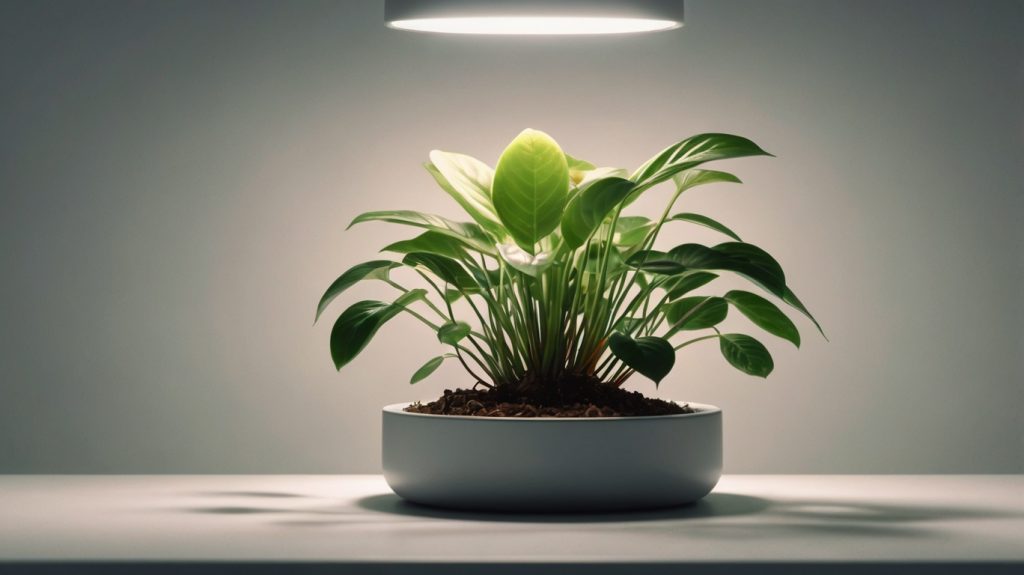
Let’s be real: once you get into houseplants, the supplies multiply faster than fungus gnats. Pots, soil bags, fertilizers, tools—it can look like you’re secretly running a greenhouse out of your closet. Enter organization.
Storage bins with lids – Great for keeping potting soil fresh and bug-free. Bonus: no more mystery spills.
Tool caddies – Keep all your shears, sprays, and meters in one spot. That way, when your plant emergency hits, you’re not playing scavenger hunt.
Shelves & racks – Double as storage and display. You can stack your pots, organize your fertilizers, or create a little “plant parent station.”
Labeling systems – Write down dates for fertilizing, watering quirks, or even plant names (because let’s be honest, not all of us remember the difference between a philodendron and pothos at first glance).
Organization doesn’t just save you time—it makes plant care feel less like a chore and more like a well-oiled routine.
Bonus Gadgets: Because Why Not Go Full Plant Nerd? 🌱🤓
Now for the fun stuff—the extra gadgets that aren’t 100% necessary, but once you have them, you’ll wonder how you lived without them.
Grow light timers – Set it and forget it. Your plants get consistent “sunshine,” and you don’t have to play light switch babysitter.
Plant moisture alarms – Some even beep when your soil’s dry. A little dramatic, but hey, it gets the job done.
Digital apps & sensors – Hook them up to your plants, and they’ll send updates to your phone about moisture, light, or even nutrient levels. Basically, your plant becomes a text buddy.
Mini fans – Improves airflow around your plants, reduces mold risk, and gives your green friends that breezy, jungle vibe.
Cute extras – Watering globes shaped like birds, plant-themed humidifiers, or decorative stakes that double as art. Not necessary, but definitely Instagram-worthy.
These gadgets may be extra, but so are you—and your plants deserve the royal treatment. 🌿👑
Conclusion: Your Plant Toolkit = Plant Happiness
At the end of the day, keeping houseplants happy isn’t about having a jungle-sized budget or a greenhouse in your living room—it’s about giving them the right tools, a little attention, and lots of love. From pots and soil to lights, humidity helpers, and even those fun bonus gadgets, each piece of equipment makes your plant-parent life easier and your leafy roommates healthier.
Remember: plants aren’t here to stress you out. They’re here to make your home greener, calmer, and a little more alive. So grab your tools, stay consistent, and enjoy the process. After all, a happy plant equals a happy plant parent—and trust me, nothing beats the proud feeling of looking at your thriving indoor jungle and saying, “Yep, I did that.”
